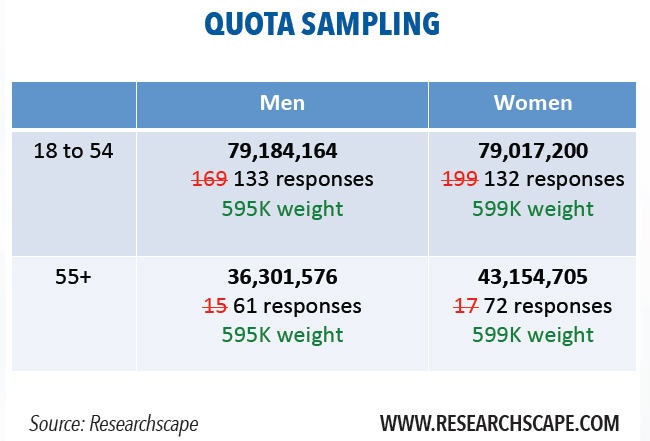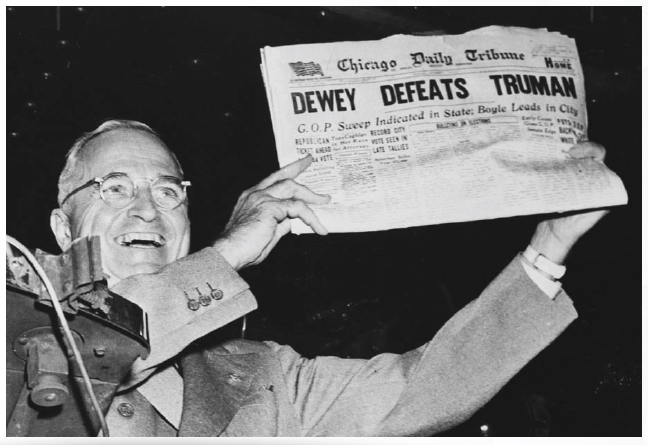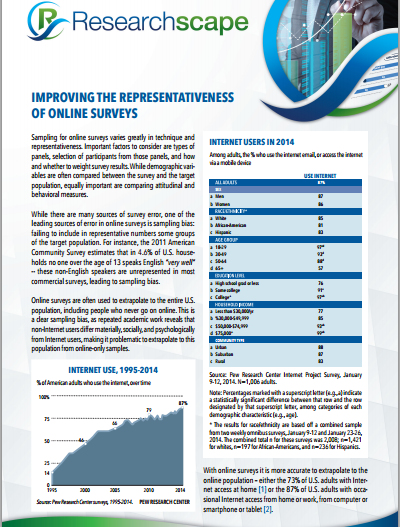Given that effective sample size declines dramatically when the characteristics of the sample don’t approximate national representativeness, one method of improving non-probability sampling is quota sampling, dividing the sample into cells and recruiting to fill those cells. Once 51% of the responses are women, you stop letting additional women take the survey, for instance. In this way, you minimize the effect of weights.

Quota sampling gets a bad rap because of “Dewey defeats Truman” yet in fact quota sampling had been effective in the elections before 1948. This is a recurring theme – non-probability sampling is often close enough, but it is wrong much more often than probability sampling. And in fact the issues in 1948 may have been less with quota sampling than the respondent selection methods.
Corporate researchers purchasing panel would do well to regularly use quota sampling to help reduce sampling bias, though panel providers differ in how they price quotas. I recently had the price for one study increase 50% for adding 3 quota cells and increase 100% for adding 12 quota cells.

 This is an excerpt from the free Researchscape white paper, “Improving the Representativeness of Online Surveys”. Download your own copy now. See also Early Dashboard Results Skewed Until Quota Sampling Kicks In.
This is an excerpt from the free Researchscape white paper, “Improving the Representativeness of Online Surveys”. Download your own copy now. See also Early Dashboard Results Skewed Until Quota Sampling Kicks In.